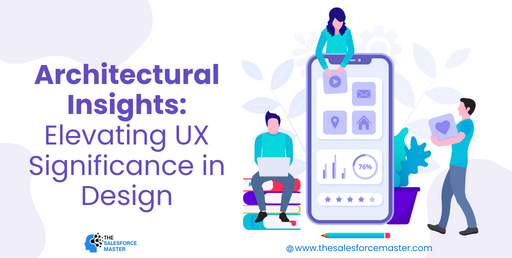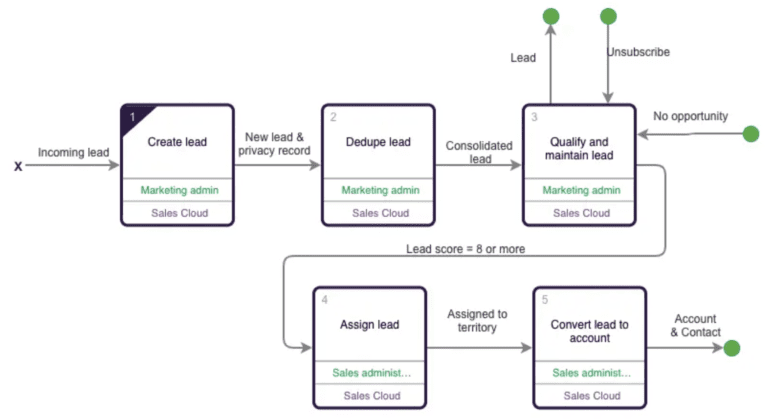
The evolving landscape of Salesforce is witnessing a significant convergence between User Experience (UX) Design and Architecture, compelling architects to immerse themselves in the realm of UX. The emergence of certifications such as User Experience Designer and Strategy Designer has ignited conversations about the pivotal role UX plays in shaping comprehensive solutions. While architects traditionally concentrate on technical capabilities and implementation, UX designers specialize in crafting intuitive interfaces.
This article delves into the collaborative synergy between user experience designers and architects, underscoring how their joint efforts result in seamlessly integrated, user-friendly solutions. It illustrates how architects can elevate project success through designs that are efficient, scalable, and sustainable. By adopting a user-centric approach and integrating UX design early in the process, architects can drive ROI, enhance user satisfaction, and lay the groundwork for sustained project success.
User Experience Designers vs. Architects
The recent emphasis on user experience design within Salesforce, exemplified by the introduction of certifications like User Experience Designer and Strategy Designer, has sparked a valuable discourse among architects. Having personally completed both certifications, I advocate for architects to embrace UX design, particularly on their path to becoming a Certified Technical Architect (CTA).
When I began crafting process and journey maps based on CTA scenarios, it significantly transformed how I conceived solutions and presented my designs. I consistently encourage architects, especially those striving for CTA, to familiarize themselves with UX Design, as it can profoundly influence the development of comprehensive solutions. I’ve conducted sessions guiding individuals on incorporating journey mapping into solution design, with a specific focus on its relevance to those pursuing the CTA certification.
The synergy between architects and UX designers becomes evident as they collaborate to seamlessly blend visual and technical elements, resulting in cohesive, user-friendly solutions. Despite their distinct areas of expertise, both roles converge in their consideration of user needs, business requirements, and personas, showcasing a crucial collaboration that ensures the creation of functional and aesthetically pleasing systems.
Architects, traditionally focused on technical capabilities and implementation, stand to gain from understanding UX principles, as seen in the transformative impact of integrating journey mapping into solution design. This collaborative approach addresses the overlap in responsibilities, such as optimizing user interactions and creating intuitive interfaces. Through joint efforts, UX designers and architects elevate the overall project, ensuring solutions are not only technically robust but also aligned with user goals and objectives. This collaboration fosters the development of tailored, holistic solutions that prioritize both functionality and user satisfaction.
User Interaction And Adoption
Effective UX design plays a pivotal role in shaping user interactions within a system, influencing critical technical and architectural considerations during project development. Architects must prioritize a deep understanding of user interactions to inform their decisions. By concentrating on the user flow within the system, architects can pinpoint areas for streamlining and simplification, thereby enhancing overall user experience and task completion.
The significance of UX in driving user adoption is underscored, emphasizing the need to align architectural decisions with user needs for project success. Architects should craft solutions that not only meet user expectations but also leverage pre-built platform features efficiently. In essence, a well-designed architecture complements user experience and usability, ensuring a smooth and effective workflow for users.
User adoption should be a central consideration in the construction process. If a system is not user-friendly and fails to attract users, the architecture becomes inconsequential. A well-thought-out architecture contributes to user adoption, user experience, and usability. Minimizing user effort by implementing features like guided flows or Lightning Web Components (LWC) becomes crucial to prevent users from navigating across multiple interfaces to complete a task.
Creating a successful user experience hinges on architects understanding the end user’s expectations. The goal is to build solutions that align with these expectations while operating within the platform’s capabilities. The intricacies of platform functionality can impact user experience, prompting architects to capitalize on pre-built features for efficient solutions. A nuanced understanding of user tasks informs decisions on whether to employ out-of-the-box solutions or opt for more intricate tools like LWC and Apex.
Process And Journey Mapping
Architects should prioritize solving problems from a user perspective to ensure a comprehensive solution that addresses gaps in the user experience. To gain a better understanding of end users, architects should delve into who they are, what they do, and why. Process and journey mapping can be employed to comprehend the user journey and data flow, providing architects insights into necessary objects, object relationships, and potential high-touchpoint objects leading to Large Data Volumes (LDV). Through this mapping, integration touchpoints for process and data requirements become apparent, enabling the seamless integration of systems and data sharing, ultimately impacting the user experience. Architects can also make informed decisions on whether an integration needs to be synchronous or if it can be optimized for a more performant asynchronous pattern.
Furthermore, architects must consider user journeys and design solutions that meet user requirements from onboarding to regular use. Streamlining task completion involves focusing on system flow and ensuring a successful end-to-end user experience.
To illustrate, a simple example of a process map from one of the Salesforce Trailhead modules showcases how a user-centric approach helps architects identify necessary record ownership changes and reveals potential conversions, such as from Lead to Opportunity or when an Order is created. This process also informs security and data visibility requirements. Overall, understanding end user expectations through mapping and process design empowers architects to build more successful solutions that genuinely meet user needs.
Higher Probability Of Success
Neglecting consideration for user interactions across all touchpoints poses a substantial risk of project failure, as crucial steps in the process may be overlooked.
Architects bear a significant responsibility for project success, often underestimated. To enhance the likelihood of success, they must focus on devising the simplest solution that fulfills requirements with minimal technical debt, while simultaneously easing the user’s tasks. Although it may seem straightforward, architects often encounter challenges unless they possess a thorough understanding of the user journey.
Creating straightforward solutions aligned with the path of least resistance is imperative for architects. This approach reduces project complexity, enhancing user comprehension and usability. Architects must grasp the desired end result and tailor technical solutions accordingly.
Fundamentally, architects should prioritize the user experience by crafting solutions that are intuitive, user-friendly, and easily navigable. This approach mitigates the risk of project failure and promotes adoption and success. A well-crafted user experience contributes to heightened user satisfaction, and increased adoption rates, and ultimately fosters overall project success.
Performance, Scalability, And Usage
Architects must possess a comprehensive understanding of both user behavior and system usage metrics to mitigate project risks effectively. A crucial aspect involves anticipating scalability requirements and usage patterns during the design phase.
When concentrating on scalability and optimizing performance with respect to user processes, architects have the opportunity to engineer systems capable of accommodating increased usage while ensuring efficient functionality. Integration of UI load testing tools like LoadRunner or Selenium can aid architects in assessing the performance of their designs.
Efficiency and scalability can be enhanced by architects identifying objects with substantial data volumes. Questions surrounding data archiving arise, prompting considerations about user interactions post-platform transfer. Developing a robust archival strategy is essential, but equally important is determining how internal and potentially external users will access the archived data.
By placing emphasis on efficiency, scalability, and performance in collaborative efforts between architects and designers, a streamlined environment is created for users to accomplish tasks more swiftly. This optimization cascades into improved overall experiences for end customers.
Increase ROI Through Sustainability
Ensuring the success of a project involves prioritizing return on investment (ROI), a factor achievable through the adoption of sustainable design. A well-crafted solution should not only be successful in the short term but also generate enduring value for organizations. It’s crucial for architects to integrate ROI considerations from the project’s inception. Despite the perception that ROI might not be an architect’s direct responsibility, architects, in reality, are constantly factoring in ROI and risk in their decision-making process.
Consider this perspective: architectural decisions made today should not hinder the functionality or adaptability of the design in the future. It’s imperative to design with flexibility and extensibility in mind, minimizing the potential for rework or accumulating technical debt as technology and business requirements evolve.
Moreover, architects must assess the technical feasibility of the solution, taking into account the long-term costs and consequences of the initial design. Questions such as whether it makes sense to build from scratch or explore prebuilt alternatives need to be addressed. This comprehensive approach enables architects to create sustainable designs that are not only efficient but also cost-effective in both construction and maintenance.
Early incorporation of user experience design into the planning process is another key aspect. Architects can collaborate with UX designers to use wireframes or prototypes, facilitating the testing and refinement of the design. This proactive involvement helps avoid expensive redesigns, ensuring that the final product aligns with user needs. User feedback becomes an integral part of the design process, contributing to a more desirable end result.
In essence, architects should prioritize designs that not only maximize ROI but also deliver enduring value to the organization. Taking a holistic view of the project, considering technical feasibility, long-term costs, and overall value, architects play a pivotal role in ensuring project success and driving ROI through sustainable design.
Summary
Architects find user experience design crucial as it offers a structured approach to comprehend how individuals will engage with the solutions they are constructing. With the guidance of a UX designer, architects can prioritize user experience, ensuring that the systems they create are not only functional and efficient but also user-friendly and enjoyable.

